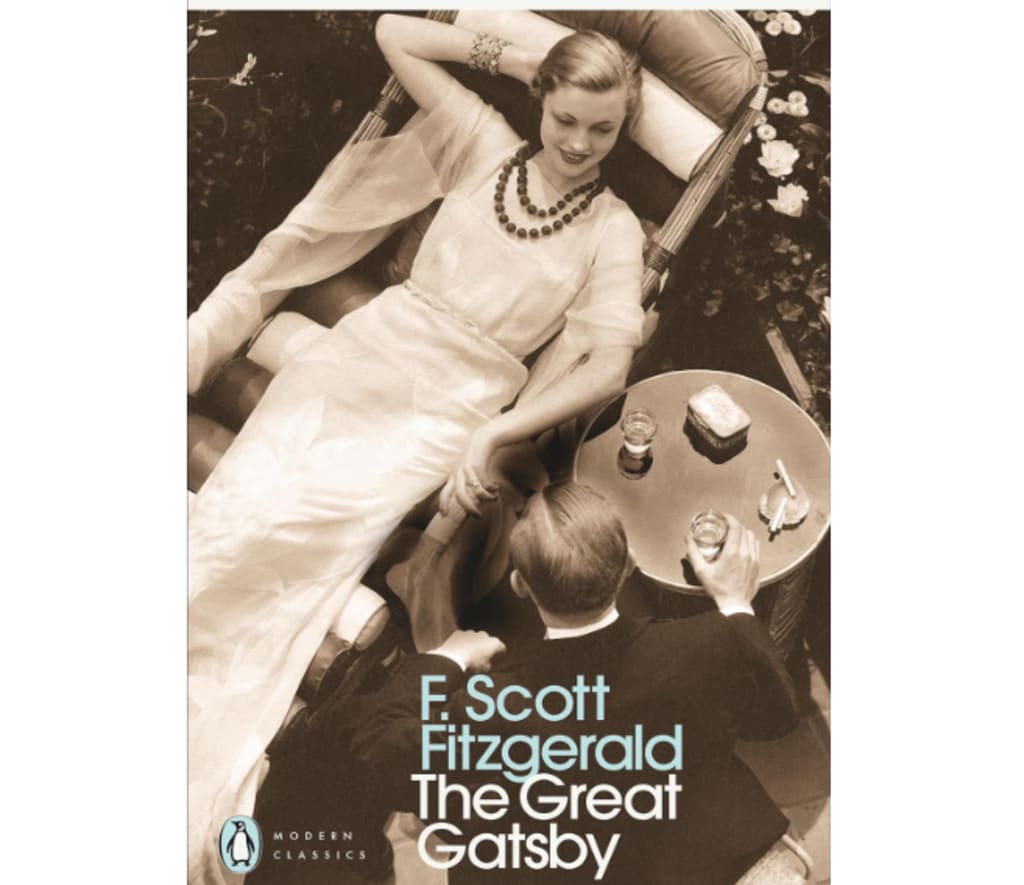The Great Gatsby the F. Scott Fitzgerald
The American Dream and Moral Decline in the Jazz Age

Introduction
The Great Gatsby, written by F. Scott Fitzgerald, is one of the most iconic novels in American literature. Published in 1925, this work captures the essence of the 1920s, also known as the Jazz Age, a period of economic prosperity and social change in the United States. Through his characters and plots, Fitzgerald explores themes of love, ambition, decadence, and the unattainable American dream. In this article, we will take a detailed tour of this masterpiece, analyzing its context, main characters, plot, and its enduring legacy in literature.
1. Context and Setting
The Great Gatsby is set in the summer of 1922, in the fictional town of West Egg on Long Island, New York. The story reflects the social and moral tensions of the time, marked by the prohibition of alcohol, the rise of lavish parties, and a growing disparity between rich and poor. The setting is crucial to understanding the motivations of the characters and the atmosphere of opulence and superficiality that characterizes the novel.
The narration is carried out by Nick Carraway, a young Yale graduate who moves to West Egg to learn about the bond business. Through Nick, the reader is introduced to Jay Gatsby, his enigmatic and wealthy neighbor, known for hosting extravagant parties at his mansion, attended by people from all over. Gatsby is a fascinating and mysterious character, whose wealth and opulent lifestyle contrast with his humble origins.
2. Main Characters
The Great Gatsby features a cast of complex and memorable characters. Jay Gatsby, the protagonist, is a man of humble origins who has become filthy rich, apparently through questionable means. His life is dominated by his obsessive love for Daisy Buchanan, a young woman he met before going to war and who represents everything he desires.
Daisy Buchanan is Nick Carraway's cousin and is married to Tom Buchanan, a wealthy and arrogant man. Daisy is a complex character, caught between her love for Gatsby and her comfortable life with Tom. Tom Buchanan, for his part, is a brutal and racist man who has an extramarital relationship with Myrtle Wilson, the wife of a mechanic.
Nick Carraway, the narrator, is often seen as the only morally upright character in the novel. His objective perspective allows the reader to see the decadence and superficiality of the other characters. Through Nick, Fitzgerald offers a scathing critique of the society of the time.
3. Main Plot
The plot of The Great Gatsby revolves around Gatsby's obsession with Daisy and his attempt to recreate the past. Gatsby hopes that his partying and newfound wealth will impress Daisy and attract her back to him. Through a series of events, including a reunion arranged by Nick, Gatsby and Daisy rekindle their relationship.
However, tension increases as Tom Buchanan becomes aware of the relationship between Gatsby and Daisy. This culminates in a confrontation in a New York hotel room, where Tom exposes Gatsby's dark past and humble origins. Daisy, overwhelmed by the pressure, decides to stay with Tom, leaving Gatsby devastated.
The climax of the novel occurs when Daisy, driving Gatsby's car, accidentally runs over Myrtle Wilson, who dies instantly. Tom convinces Myrtle's husband, George Wilson, that Gatsby is responsible, leading George to kill Gatsby before committing suicide. Gatsby's death is tragic and highlights the futility of his dream.
4. Main Themes and Symbolism
The Great Gatsby explores several profound themes, including the American dream, moral decay, illusion versus reality, and the struggle between love and wealth. The character of Gatsby embodies the illusion of the American dream: the belief that anyone can achieve success and happiness through hard work and determination. However, his tragic end suggests that this dream is unattainable and corrupted by superficiality and greed.
Symbolism is a key tool that Fitzgerald uses to enrich the narrative. The Eye of Dr. T.J. Eckleburg, depicted on a billboard, is seen as a symbol of vigilance and moral judgment. The green light at the end of Daisy's dock symbolizes Gatsby's hope and unattainable dream. Gatsby's lavish parties represent the decadence and emptiness of high society.
F. Scott Fitzgerald's The Great Gatsby remains a timeless masterpiece, offering a profound critique of 1920s American society and a reflection on the nature of the American dream. Through his complex characters and rich symbology, Fitzgerald manages to capture the hopes and disappointments of a generation. The tragic story of Jay Gatsby, with his unrequited love and his relentless pursuit of an ideal, resonates even today, reminding us of the fragility of our dreams and the reality of our aspirations.
The Great Gatsby is more than a love story or social criticism; It is a window into a period of change and a meditation on what it really means to be successful and happy. Its enduring relevance and ability to inspire reflection and debate ensure that it will continue to be read and studied for generations to come.
If you liked it, subscribe :)
About the Creator
vanesa stories
I am passionate about creating summaries of mystery, suspense and motivational books. I share detailed and captivating analyzes that invite you to immerse yourself in fascinating literary worlds and find the inspiration you need.
Enjoyed the story? Support the Creator.
Subscribe for free to receive all their stories in your feed.






Comments
There are no comments for this story
Be the first to respond and start the conversation.